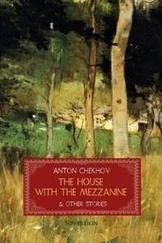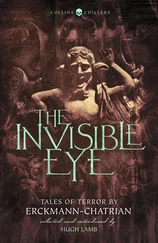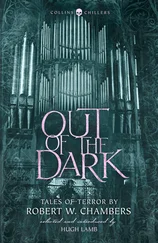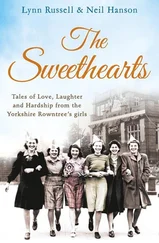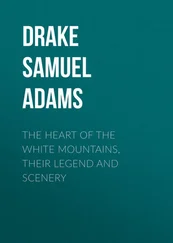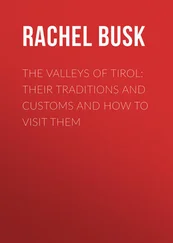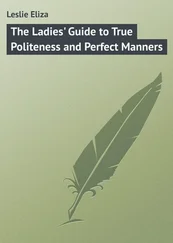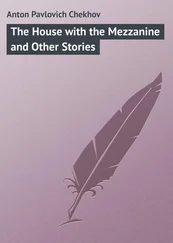HarperCollins Publishers
1 London Bridge Street
London SE1 9GF
www.harpercollins.co.uk
Collins Chillers edition published 2018
First published in Great Britain by Ash-Tree Press 1996
Selection, introduction and notes © Hugh Lamb 2018
Cover design by Mike Topping © HarperCollins Publishers Ltd 2018
Cover photographs © Shutterstock.com
A catalogue copy of this book is available from the British Library.
This novel is entirely a work of fiction. The names, characters and incidents portrayed in it are the work of the author’s imagination. Any resemblance to actual persons, living or dead, events or localities is entirely coincidental.
All rights reserved under International and Pan-American Copyright Conventions. By payment of the required fees, you have been granted the non-exclusive, non-transferable right to access and read the text of this e-book on screen. No part of this text may be reproduced, transmitted, down-loaded, decompiled, reverse engineered, or stored in or introduced into any information storage and retrieval system, in any form or by any means, whether electronic or mechanical, now known or hereinafter invented, without the express written permission of HarperCollins.
Source ISBN: 9780008249038
Ebook Edition © October 2018 ISBN: 9780008249045
Version: 2018-09-06
To Sheil Bramdaw – good friend and great company.
Contents
Cover
Title Page
Copyright
Dedication
Introduction
Out of the Sea
Mr Percival’s Tale
The Traveller
Basil Netherby
Father Brent’s Tale
The Snake, the Leper and the Grey Frost
Father Bianchi’s Story
The Gray Cat
Father Maddox’s Tale
The Watcher
The Hill of Trouble
Haunted Houses
The Uttermost Farthing
Father Macclesfield’s Tale
The Red Camp
My Own Tale
The Closed Window
The Blood-Eagle
The Slype House
Father Meuron’s Tale
Epilogue
Bibliography
Footnotes
Acknowledgements
Also in This Series
About the Publisher
No other family has approached the Bensons for sheer volume of printed words. Between them, Arthur Christopher Benson (1862–1925), Edward Frederic Benson (1867–1940) and Robert Hugh Benson (1871–1914) published over one hundred and fifty books, and their unpublished works include Arthur’s four-million word diary. Were that to be published in its entirety, it would occupy thirty-six volumes the size of this one.
Ghost stories formed the merest fraction of their output, yet they produced some of the finest in the genre, Fred becoming one of the best ghost story writers Britain has produced. But it was not without good cause that these three very different brothers – teacher, socialite and priest – found themselves producing literary terrors. Horror for the Bensons really began at home.
Arthur, Fred and Hugh were the surviving sons of Edward White Benson, one of Queen Victoria’s favourite Archbishops of Canterbury. Another son, Martin, died in his teens. The whole family was, to put it mildly, odd. To all appearances the epitome of an upper-class Victorian family, their history reads like a TV soap opera – a child bride, a ruthless patriarch, lesbianism, homosexuality, child death, religious mania and homicidal lunacy.
Edward Benson married Mary Sidgwick when she was eighteen (he’d had his eye on her since she was eleven). They produced six children, two of whom died young. The surviving daughter, Maggie, was to become totally insane and attempt to murder her mother, who was embroiled in a lesbian affair with one of Maggie’s friends.
The father became an ogre to his children, who spent much time in their copious autobiographical works trying to allay his ghost. None of them married and the Benson line died out with them.
With this gloriously dotty background, it is amazing that the brothers managed to keep both feet on the ground, though Arthur and Hugh had some alarming one-legged patches.
As Fred’s life is so well known, and his ghost stories very familiar and not included here, I do not propose to dwell on his career any more, but turn instead to his brothers, who are less familiar and still unjustly neglected.
Arthur became a schoolmaster, teaching first at Eton in 1892 and moving to Cambridge in 1903, where he rose to become Master of Magdalene College. He seems to have attracted some curious circumstances in his life. His main literary fame was founded on a string of books consisting of somewhat scholarly homilies, full of sweetness and light, which brought him a huge audience. One of his admiring readers was an anonymous American woman, wealthy in her own right, who had married an equally rich man. Touched by Benson’s description of the penury of Magdalene College, in 1915 she offered him, out of the blue, a large sum of money to improve the college. Understandably taken aback, Arthur eventually agreed, provided he was a trustee only, and over the next few years the American lady’s largesse enabled him to turn Magdalene into one of Cambridge’s leading colleges. Strange as it may seem, Benson and the American lady never met.
Arthur suffered from depression, often for years at a time, and this affliction was made doubly crippling for him as it was such depression that heralded his sister Maggie’s descent into madness (happily, not the case with Arthur). In one of his books, Fred recounts how Arthur, in the grip of depression, thought he had locked his servants into the house and that they would be starving to death. He urged Fred to investigate, but it was a baseless alarm: he had made provision for them and then forgotten all about it.
On a happier note, Arthur Benson is unwittingly celebrated every year at the Last Night of the Proms, when a rapturous audience bellows out his words to Elgar’s Pomp and Circumstance March No. 1 , better known as Land of Hope and Glory .
Known to the world at large as the serene author of his rather sickly essays, he was in real life very big, very jovial and a born mickey-taker. His lifelong friend was M.R. James, our finest ghost story writer, and like Benson, large and inclined to a good laugh.
It is not unlikely that they both had a quiet snigger from time to time at the antics of Hugh Benson. He seemed to have found a good antidote to the Benson blues: religion. Despite being the son of the head of the Church of England, and being ordained by his father into that church, Hugh Benson turned to the Roman Catholic church and was ordained into that faith in 1904. He did well; he rose to become a private chamberlain to Pope Pius X in Rome, returning to England in 1914 when Pius died (and dying himself soon after).
While Arthur was happy with his small Cambridge circle, Hugh Benson became famous as a public speaker and went on tours preaching the faith all around the world. He was a fiery convert indeed – as is shown in his ghost stories – and his passion for all things Catholic is perhaps the greatest flaw in his writing. He was not without human failings: he became involved with the unsavoury Frederick Rolfe (Baron Corvo). The fascination of this seedy character is hard to understand, yet he excites the interest of writers to this day. Rolfe latched on to Benson as Hugh was a Catholic priest and a famous author – the two things Rolfe most coveted – and a plan to write a book together was to turn sour in the extreme. For reasons not too clear at this late date, but more to do with Rolfe’s lack of balance than Benson’s lack of judgement, the project fell through. Rolfe saw this as one more stage in his imagined persecution by the Catholic church, and the result was a very long hate campaign against all the Bensons. Rolfe was quite prepared to include the odd brother or two in his war against Hugh, and both Fred and Arthur got vitriolic letters from him.
Читать дальше

